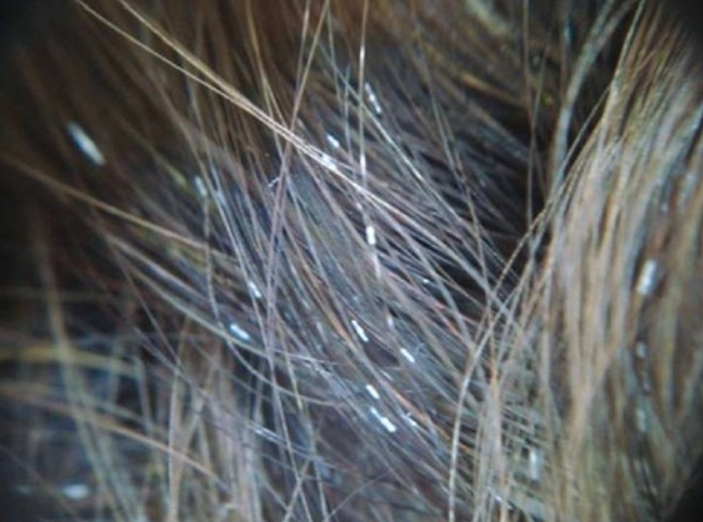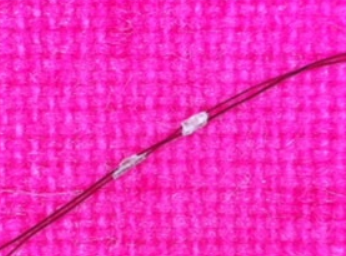Hair casts (pseudonits) are small, firm, flexible cylindrical structures of varying color that surround the hair shaft. They may be a physiological condition or a sign of certain scalp conditions. ICD-10 Code: L67.9
They are more common in females (60-80%) and occur predominantly in individuals of Asian and African descent, especially in those under 11 years of age. A large clinical epidemiological study conducted in China in 1995 found hair casts in 30% of the 3,548 individuals examined. Hair casts are classified as follows:
Based on etiology:
- Primary (idiopathic) hair casts
- Secondary hair casts - associated with various scalp conditions
Based on composition:
- Keratin hair casts - composed of parakeratotic cells from the inner and, less commonly, outer hair sheaths
- Non-keratin hair casts - formed from chemical substances (such as hair sprays, gels, deodorants, shampoos), bacteria, and/or fungi
The exact etiopathogenesis is not fully understood. Primary keratin casts are thought to be remnants of the epithelial sheaths surrounding the hair in the follicular opening. They are most commonly found in girls and women with tightly woven hairstyles (e.g., braids, ponytails, dreadlocks), suggesting that constant tension on the hair may play a role in their formation. While some theories suggest localized blood flow disturbances and scalp inflammation, many authors consider it a physiological condition.
Secondary keratinous casts result from impaired keratinization and inflammation at the follicular orifices where parakeratotic scales accumulate. These scales are periodically extruded as an amorphous mass that surrounds the hair shaft and consists of the preserved central layer of the inner root sheath and the outer thick keratin layer. Propionibacterium acnes and psychological stress have been proposed as potential factors in the pathogenesis of this condition.
Scalp conditions associated with the formation of hair casts include:
- Psoriasis
- Seborrheic dermatitis
- Pityriasis amiantacea
- Traction alopecia
- Graham-Little-Piccardi-Lassueur syndrome
- Tinea capitis
- Folliculitis decalvans
- Frontal fibrosing alopecia
- Pemphigus vulgaris
- Androgenetic alopecia
The condition is characterized by the appearance of solid, thin, isolated tubular structures ranging in size from 2 to 8 mm. They are semi-transparent or have colors such as yellowish, white, gray, or light brown. These structures surround the hair shaft, most often in its proximal part. A characteristic feature is their free movement along the hair shaft.
In some cases, the elements resemble the shape of the follicular funnel. The number of these structures can vary from one to several hundred. The most common location is the scalp, less commonly in the hair of the armpits, pubic region, eyebrows and eyelashes. There are no subjective symptoms. The course of the disease is chronic with no tendency to spontaneous remission. In cases of secondary alopecia, symptoms of the underlying disease may be observed.
- Pediculosis (nits)
- Trichorrhexis nodosa
- Trichonodosis
- White piedra
- Dandruff
For secondary forms, treatment is aimed at addressing the underlying condition. For other forms, the following approaches may be used:
- Avoid tight braids.
- Avoid the use of hair sprays and gels.
- Use a 0.025% solution of retinoic acid.
- Use a 5% solution of salicylic acid in oil.
- Use shampoos containing ketoconazole.
- Comb the hair regularly with a fine-toothed comb.


